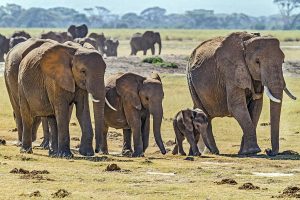Cultural Learning

Culture commonly refers to patterns of learned and shared behavior that are cumulative and transmitted across generations. Humans use culture to adapt and transform the world we live in but many scientists have provided examples of animals who learn, share and transmit adaptations across generations. This raises important questions about whether human culture is truly unique.
Learning Objectives
At the end of the chapter, you should be able to:
- Identify ways in which animal culture is similar and different from human culture.
- Explain how cognition has contributed to human culture.
- Differentiate between emulative and imitative learning.
- Explain how social learning is different from cultural learning.
- Distinguish between the three factors that may have contributed to humans’ unique ability to cooperate as a species.
- Explain the ratchet effect and how it contributes to culture
- Explain how culture can be lost.
- Identify factors that contribute to culture learning and transmission.
- Distinguish between the three main mechanisms for cultural transmission in humans.

